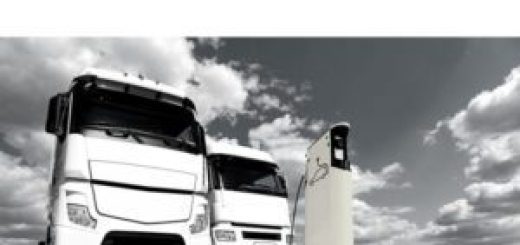Embracing the EV revolution: revolutionizing fleets through retrofitting for eco-friendly transportation
Retrofitting trucks reduces Total Cost of Ownership (TCO) by 24% versus new electric models, while buses experience a 29% TCO reduction. This economical option makes it an attractive choice for fleet owners. Electric vehicle (EV) retrofitting is a key actor in the field of urban transport and has the potential to completely transform environmentally friendly city commuting. Retrofitting offers a workable bridge towards an electric future as global efforts to lessen vehicle emissions and fight climate change gain traction. It provides a workable option that satisfies India’s climate action objectives set in the Paris Agreement by converting current internal combustion engine (ICE) cars to electric vehicles. With a noteworthy CAGR of 7.40%, the worldwide retrofit vehicle market is expected to reach the astounding value of $125.37 billion by 2032.
As per the G20’s “Principles On Financing Cities of Tomorrow: Inclusive, Resilient, and Sustainable,” retrofitting an electric vehicle is considered an essential component. It increases the longevity of cars, lowers operating expenses, and helps India fulfill its promise to develop a sustainable green economy. One of the main benefits of retrofitting is that it pays for itself far more quickly than buying brand-new electric cars. This makes upgrading an economical choice, especially for fleet managers overseeing a sizable vehicle fleet.
The benefits of retrofitting are especially noticeable in the heavy-duty vehicle industry. Not only does retrofitting trucks result in a significant 24% Lower Total Cost of Ownership (TCO) when compared to new electric versions, but it also lowers TCO for buses by 29%, making it an appealing option. Furthermore, retrofitting advances the circular economy by prolonging the useful life of substantial resources and energy previously used in the production of automobiles. For example, 3.5 tonnes of steel may be reused and 5.25 tonnes of CO2 emissions can be avoided by upgrading a single vehicle. Taking into account a fleet of 1,000 trucks, this saves 5.25 kilotons of CO2 emissions overall.
By implementing EV retrofitting, SRTUs in India have the chance to significantly contribute to the reduction of carbon emissions and the advancement of sustainability. Retrofitting these buses, which have huge fleets that carry millions of passengers daily, maybe a potent way for them to show off their dedication to reducing urban pollution and fostering a healthier environment. Retrofitting offers SRTUs a unique financial benefit in that it lets them keep their existing assets while delaying the significant expenses associated with buying new EVs. Diesel buses may be converted into electric vehicles, which can save operating costs, cut greenhouse gas emissions, and add 8 to 10 years to the vehicle’s lifespan.
Policy Intervention
The implementation of strategic policy initiatives that encourage electric car retrofitting can significantly speed India’s transition to an electric vehicle (EV) future. The shift can be astounding if retrofitting incentives are included in the FAME III program, especially for fleet operators that handle big trucks. Furthermore, retrofitting should be free from strict scrappage regulations, allowing older but still functional cars to continue operating after conversion in compliance with environmental goals without requiring the early withdrawal of vehicles from service.
India can embrace the electric wave with confidence if it combines legislative reforms, retrofitting methods, and a favorable market climate. The expenses of conversion can be significantly decreased by changing the GST rates to regard retrofitting kits and batteries used for switching as EVs, albeit at a lower rate of 5%. This action will promote broad acceptance and, when combined with state-specific regulations motivated by Telangana and Delhi’s advancements, will propel a unified national effort toward retrofitting. In the end, this will give existing cars a new lease on electric life.
Source by:- https://www.financialexpress.com/




Recent Comments